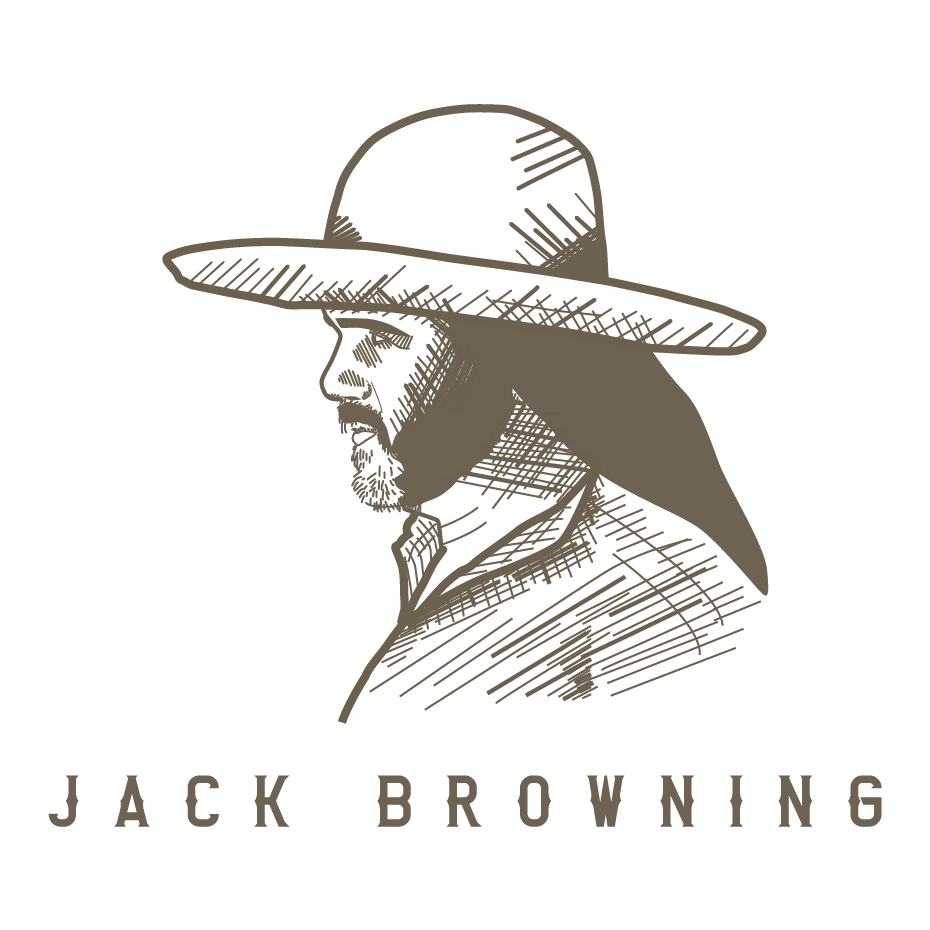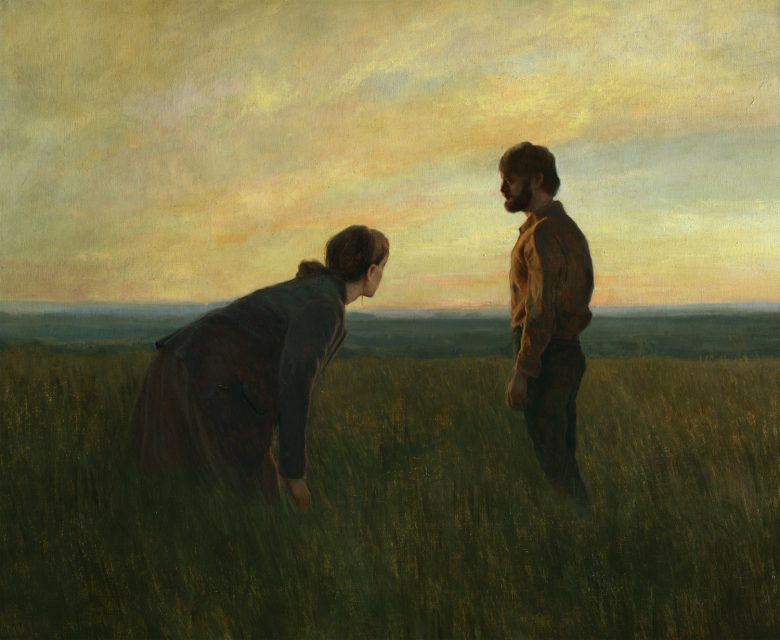Hey there, and thanks for taking a chance on this new project of mine! Through my work, my interests and social media, I am privileged enough to know some incredibly talented human beings from around the world and from so many different industries and backgrounds. I am just as interested in their stories and their crafts as I hope that you are, and I’m looking forward to bringing you many, many more of these conversations in the coming months! Now, shall we get to it..?
Morgan Irons is a painter, writer and thinker working out of the rural highlands of Montana. I was first introduced to Irons’ work by Ed Roberson on his podcast (which you can find here: www.mountainandprairie.com), and I was immediately hooked. Her expressive, timeless narratives of rural America are jaw-dropping, from both a technical and a thematic perspective. We got to catch up over the lockdown as Morgan prepared to hang her second solo show at Old Main Gallery in downtown Bozeman, Montana, opening July 3rd 2020 and running until July 30th. (www.oldmaingallery.com)

J- When did you first start to paint? Were you always making when you were younger?
M- I was a creative kid and was always drawing. But I didn’t start to paint until 2015, when I was 22.
J- You told an INSANE story on Mountain & Prairie about your father being a wilderness pilot in Alaska and him running out of fuel? Can you remember any other of his stories? Have you yourself had any crazy encounters whilst out in the wilderness or at your cabin?
M- That story was definitely a turning point for the path of my childhood. My dad was very young when he got hired on as a bush pilot in the Wrangles, and something went wrong and he had to essentially do a glacier landing in the wilderness. And then he tried to hike out of the site and left the plane, which led to getting lost. Which, during the winter in such a remote place can be a deadly mistake. Luckily he was found, but not before the rangers told my mom it was a lost cause. I was a few months old at the time, and they were living in a basic cabin with no running water. They ended up deciding that it was too difficult and risky to continue up there, so they moved us to Idaho. But their sense of adventure stayed with me. I did time up in Alaska after college working for an outpost camp and for the last six years I’ve lived in Montana. I live in a log house on 10 acres that border Forest Service on a mountaintop. The encounters that I have here are very special in that the wildlife feels very comfortable here. I have moose that sleep in the spring, and bears currently eating the huckleberries that cover the acres.
The encounters that I have here are very special…I have moose that sleep in the spring and bears currently eating the huckleberries that cover the acres.
J- What do you think your experiences in Alaska contribute to your work and your process?
M- I think Alaska showed me that I value independence to an extreme level perhaps. It definitely solidified my chosen lifestyle out here in the mountains, which led to me having to study art on my own to avoid cities. Of course I have days that I am struggling in the studio with something technical, and wish I had a teacher or mentor to ask for help. But overall I am very grateful that I have chosen to study this way. There are pros and cons of each path to learning art, and I’d choose the cons of self-study any day. But I think I am fortunate in that my learning style is very visual in that I can garner a lot of information by looking at art.
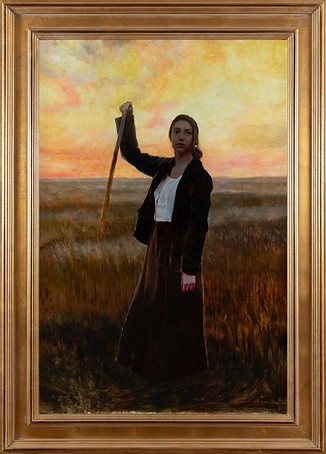
J- You did a Psychology degree at University, right? Do you think this affects your work and how you portray these scenes and subjects in any way?
M- I sure hope it does! It was a very expensive endeavor. But to be serious, yes I think my paintings are very sensitive to the psychology of the narrative and the characters. And the study of how the brain works visually was very helpful, on a mechanical level. Things like composition make more sense when you understand how the brain receives information.
J- What did you do before you decided to take up the brush and knuckle down with your art in 2015?
M- I worked as a neuropsychometrist for a few months after Alaska, doing the testing for the neuropsychologists. I basically administered IQ tests, memory tests, attention tests…in a portfolio to assess an individuals needs. It was interesting work, but didn’t pay well for Bozeman standards and I knew quickly that I was not a great employee or motivated in a windowless office. And it was a lot of small math and attention to detail, which are places that my talent does not shine. I left that job to pursue art, actually before I even purchased paint. I knew it would work. I obviously still had bills to pay though, so I told myself that any work I took on would have to be done on my own time so that I could ensure I had time to paint. I did mostly web design work at that point, and lived very frugal for those first few years.
J- What place does art hold in the preservation of the culture of rural American life and The West?
M- Art is an essential piece of the cultural recording of rural American life and The West. I struggle heavily however with what is often represented in traditional western art, and by whom. I think we should be asking ourselves, ‘which stories are ours to tell?’ Your art will be better for it. And the gatekeepers of the market need to be upholding some higher standards. The West is changing, and there are more interesting stories happening than the harmful tropes we condense things to.
I think we should be asking ourselves, ‘which stories are ours to tell?’ Your art will be better for it.
J- Had you an interest in making art or the art world before you really dove into making your own work?
M- I grew up with no access to working artists or galleries. So the idea of making art did not hold the potential in my reality that it did when I moved to Bozeman and started seeing it. Once I saw it, it was maybe only a few months before I made the leap into making my own work.
J- If your pieces were all their own people, which would you be most psyched to hang out with?
M- I love this question. Right now, I want to spend the most time with “After the Storm”. Because it is emotionally honest, reverent, thoughtful and historically aware. I value all of those things in folks I spend time with.
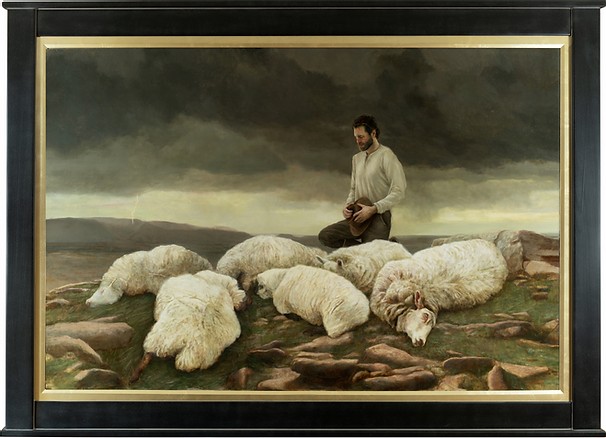
J- Your mountain retreat looks like the holy grail, especially for other introverted artists like myself!What made you choose somewhere so off the grid?
M- I am very lucky to have this spot. I prioritize that lifestyle heavily! For many reasons. I know that I couldn’t make the work I do with the stimulus of town or a busy life. I want my work to be quiet and authentically expressing myself. And I’m personally very inward. So in a way it’s a protective measure.
J- How did your representation by the Old Main Gallery come about?
M- I was fortunate enough to be featured in Southwest Art Magazines ’21 Under 31’ a few years ago. The gallerist at Old Main had seen that article and had heard my name from some mutual people. So it was a combination of referral and having something concrete behind my work.
J- What does an average work day in the life of Morgan Irons look like?
M- If I am not under a major deadline, my days are more balanced. Ideally my days start early, with a walk around the property with my dog Bear. Then it’s coffee and breakfast, and I like to do some writing work in the morning when my brain is most reflective. With my writing practice, I do Daily Pages from the Artists Way and also write about the work and what I’m thinking about it. Then, I’ll head into the studio in the back of the house and work on the most pressing painting. I like to have two or three going at a time, as I paint indirectly and need layers to dry between sessions. If I can get away with it, five hours is enough time for me to paint a day. Under a deadline though that can easily double. But I tend to tinker around a bit and spend a lot of time looking at and thinking about the process. Then I like to go for a hike or a run, it’s good for my mental state. In the evenings I’ll spend time with loved ones or catch up on all the work that goes into an art business aside from painting. Mostly research.
J- You base many of your subjects on the people in rural America that you know? Who are amongst the most interesting subjects that you have worked with
M- I do! I know pretty much all of my models. One I have painted most, Sarah, she lives on a flower farm outside of town. And we’ve been working together for years now, so the process is very dialed in and fruitful. She’s an artist herself and truly understands what I am after. The farm is idyllic for my paintings too, so it’s a win win all around.
It sounds batshit, but I swear by it to be able to access new ideas that would exist naturally in the world of my paintings.
J- How do your works usually come about, from the initial idea to you deciding that it is finished?
M- The initial ideas come from a variety of sources. Sometimes in that state just prior to falling asleep, and then I also have a practice where I give myself a timed hour to daydream about the world where my paintings exist. I visualize walking around the scenes, looking at the paintings I’ve already made from all different angles, and then wondering what might be around the corner. I also have a long symphony playing that has a variety of emotion to it, so that helps to access new feelings. It sounds batshit, but I swear by it to be able to access new ideas that would exist naturally in the world of my paintings. From there I will gather references, by photoshoots with models and painting studies on site. I often will have to imagine the landscape to get what I envision in my head. So I composite a bunch of things together, then start the painting. Which then changes as I go, based on what the painting needs. A large piece will take months, smaller ones only a few sessions of work.
J- What’s next in the pipeline for you?
M- I just hung my second solo show, so now I am grateful for freedom to work on some larger paintings I have in mind. I will continue along the same themes, but I want to explore more explicit emotion and multiple figure compositions. I have a lot to stories I want to tell, and become a better painter.
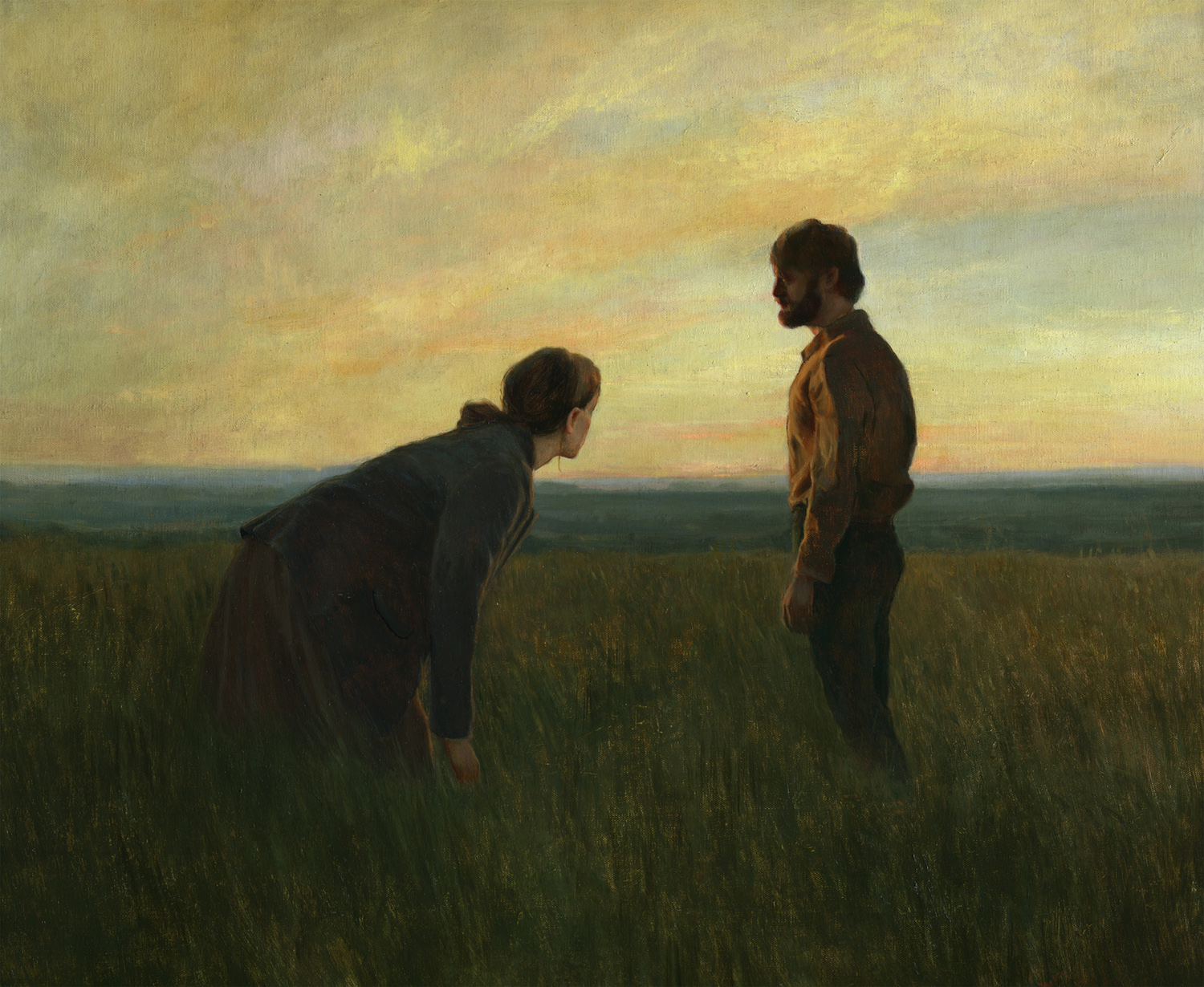
You can view Morgan’s solo exhibition at Bozeman’s Old Main Gallery in person by appointment, their site, or Morgan’s own site which is www.morganirons.com. It runs from July 3rd to July 30th 2020. Any information regarding purchasing one of the artist’s works can be found through Old Main Gallery.
You can see behind the scenes via Morgan’s Instagram, @morganirons.
